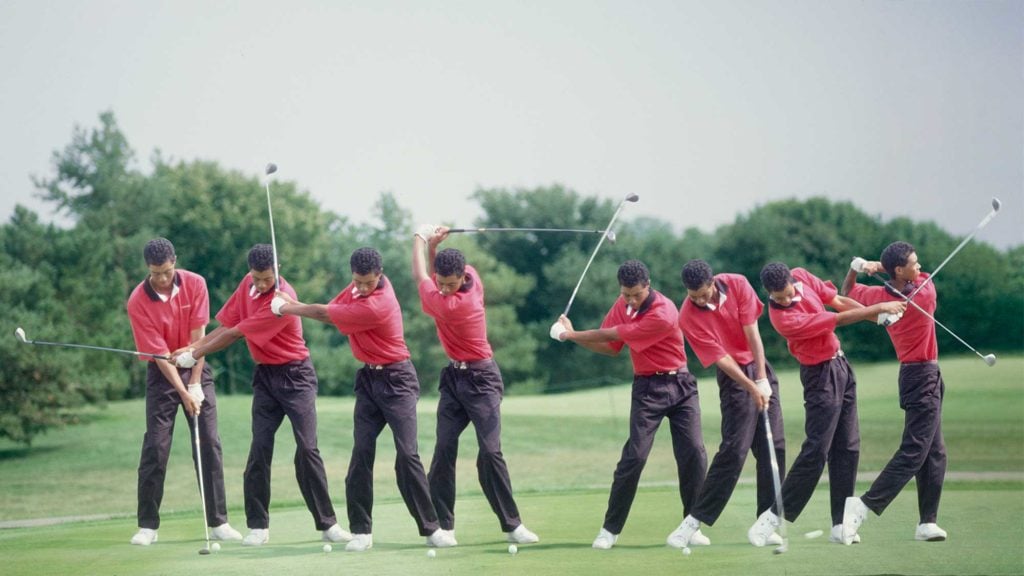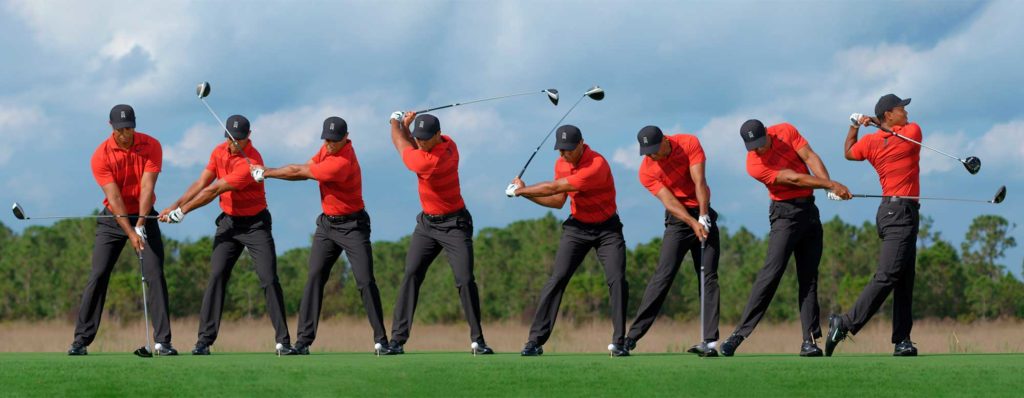A look at tiger’s swing from three different decades.
Golf Digest’s long-time relationship with Tiger Woods has provided the unique opportunity to capture his driver swing with a high-speed camera several times during the past 29 years. Here we’ve selected three for your viewing pleasure – one from his teenage days, one from his peak years, and one taken right before his comeback that culminated with a win in the 2019 Masters.
Over the years his coaches have changed, his swing has changed and certainly his body has changed, but what these three sequences prove is that fluidity, co-ordination and athleticism have always been hallmarks to his action.

Starting with this one he ripped off the tee for us as a 16-year-old in 1992 near his childhood home in California, you can see he relied more on flexibility to generate as much swing speed as he could.
Woods says his lower body was much more active back then, and his backswing often got too long to control. “Coming down, my legs and body would get ahead of my arms – a classic stuck position that led to pulls and pushes if my timing wasn’t perfect,” Woods says. “At 16, I only had one swing; an all-out full release.”
Fast-forward to age 26 [above], and the influence of his work with Golf Digest Teaching Professional Butch Harmon is evident. Thousands of range reps and hours in the gym allowed Woods to rely on the big muscles of his glutes, legs and chest to generate a lot of force. Harmon stressed a “tighter action”, Woods says, with the goal of the kind of impact position you see here: “Clubface and shoulders square, hips open, quieter hands and feet, good balance and plenty of power.”
Early in his career, Woods often let the club come too far inside the target line during the takeaway, and it would get trapped behind his body in the downswing. If he didn’t square the face at impact with some incredible dexterity in his hands, the ball was going off-line. But here you can see his right arm stays above the left in the takeaway, indicative of a club path more down the target line – leading to smaller misses.

Woods still was plenty flexible in 2002 and able to make a huge shoulder turn while his hips remained stable. More evidence of his flexibility came at the finish, as he was able to get his right shoulder pointing at the target. The club in this sequence was swung a hair past parallel at the top, but the goal, Woods said in 2002, was to restrict the length of the backswing.
“[Even after my Masters win in ’97], I always knew that my swing would have to undergo some changes for the kind of consistency necessary to compete at the highest level.”
If he only knew then what “some changes” would look like 15 years later. By December 2017, when we captured the swing of a rebuilt Tiger Woods at Medalist Golf Club in Hobe Sound, Florida [above], he had undergone so many surgeries to his body and adaptations to his technique, it’s easy to lose count. This version of Woods’ driver swing is influenced by physical limitations but is also, for lack of a better term, homemade. The breadth of advice from more than half a dozen instructors over his lifetime certainly was a guide, but Woods was a man without a coach (at least not a named coach) in his run-up to victories in the 2018 Tour Championship and 2019 Masters.
Woods said he had to temper the desire to remain one of the longer players on the PGA Tour with the awareness that his body, particularly his spine, would fare better with a less violent movement.

“When he came back, the biggest thing was his transition from backswing to downswing. It was much quieter than it used to be,” says Golf Digest Teaching Professional David Leadbetter. “There wasn’t a big sinking of the knees and then a stand-up look coming into impact, like he was doing before the spinal-fusion surgery [in April 2017]. He maintained his height much better, and that gave him room to powerfully release the club.”
Testament to his strength, Woods was still able to swing the driver faster than 120 miles per hour and average 277 metres off the tee in 2018. What made that so striking is, he generated that type of power despite a significant loss of mobility.
“His backswing has looked similar to this over the years, but you saw a subtle and vital difference here – he was more synchronised,” Leadbetter says. “The turning of his body and the swinging of his arms finish almost in unison at the top. His body used to complete the turn, and then his arms would run on independently trying to catch up on the downswing.”
Woods would have easily led the PGA Tour in strokes gained/off the tee in 2019 had he played enough rounds to qualify.



